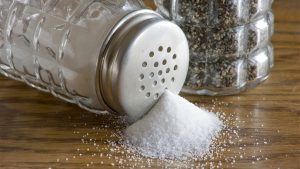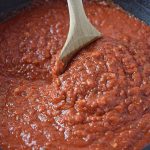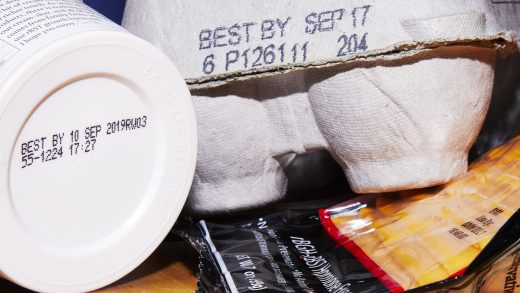You’ve heard it before. You’re going to keep hearing it. Americans eat too much salt and sodium. Processed foods are the worst culprits. But those foods have labels. The federal government requires that those labels contain valuable information to help you, the consumer, make good and informed decisions.
Most people don’t look at the labels. If they do, they often are looking for very specific information: how many calories, how much fat, how large a serving, how much carbohydrate, etc. Often those labels hold surprises. That’s why it’s so important to read them. And if you don’t know exactly what to look for, there are places to go to learn to read nutritional and ingredient labels, like this article from WebMD.
Just looking at the issue of sodium, or salt, many of the amounts in foods will shock you. For example, Wonder’s Stoneground 100% Whole Wheat Bread contains 400 milligrams (mg) per two-slice serving. Considering you only need about 2000 mg of sodium a day, just those two slices of bread is one-fifth of your daily sodium needs. Now think about the other stuff that will go on those slices: meat, cheese, mayonnaise, peanut butter. And what about anything you have on the side, like potato chips. In one meal you can exceed your total sodium recommended intake.
A better alternative is to make your own bread. But if that’s too much for you and you’re like me, a sandwich lover, Arnold Select 100% Whole Wheat Sandwich Thins. Only 230 mg sodium per roll.
Why is this important? Sodium is a necessary element we need to live. It helps maintain the fluid levels in our bodies and aids in the transport of electrical energy used by our nervous systems. While we need sodium, we just don’t need all that much. If we have too much salt in our bodies, we retain water, causing our hearts to work harder, our blood pressure to increase and damage to occur to our kidneys.
Another example is that old standby, canned chicken noodle soup. Campbell’s Condensed Chicken Noodle Soup has 890 mg of sodium in half a cup. An alternative is Progresso’s Reduced Sodium version has 235 mg per half-cup. It also has fewer calories.
Even fresh, processed meats, like name-brand chicken breasts, can be treated with a salt solution with adds sodium before you even take them out of the package. Perdue’s chicken breasts have 350 mg per 4-ounce serving. Tyson’s version of the exact same thing has only 40 mg, a nine-times difference.
Jarred pasta sauce can be loaded with sodium, 300 to 600 mg per serving. An alternative? Make your own with canned crushed tomatoes (you can get a “no salt added” version), some garlic and onion powders and a little cooking time.
So, read the labels. Make better choices in the store. And learn to make your own. You’ll probably like the taste a lot better.




